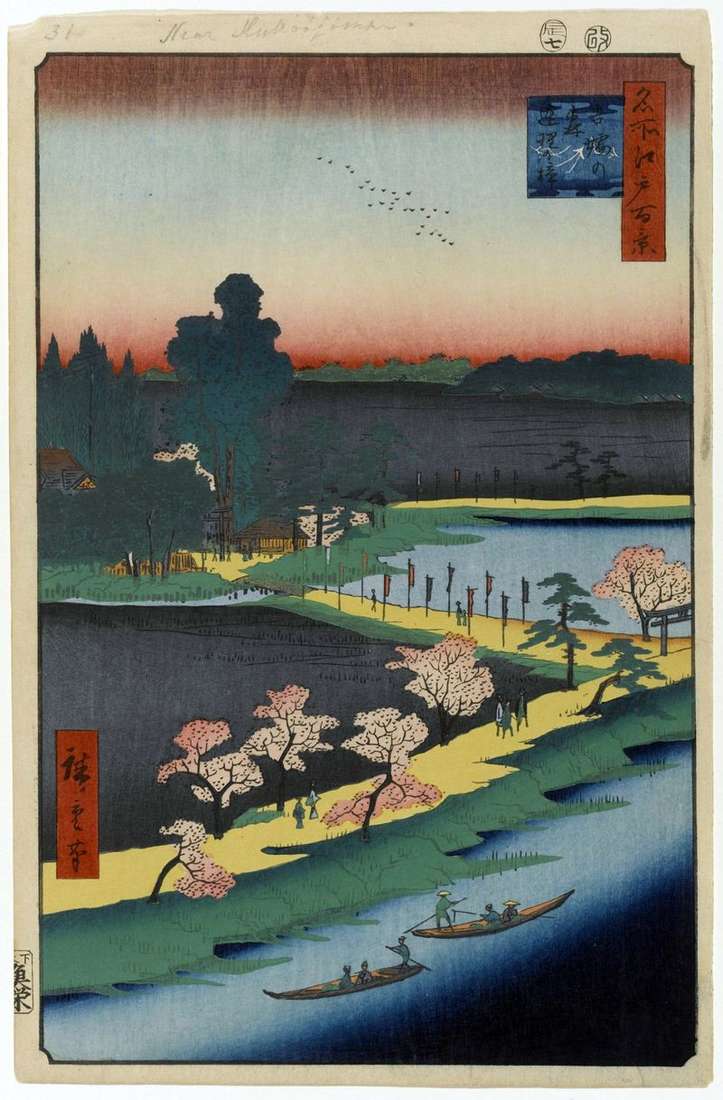
In the Hiroshige engraving, the viewer can see the road along the Dzikkengava Canal, leading to the Shinto Sanctuary of Azuma-no Mori, in front of which there are the stone gate of the Thorium. Rosa Azuma was on the north bank of the Kitajikkengawa River to the south of Camaydo Umeasika, a plum orchard. The sanctuary was dedicated to the deity Ototatibanahime-no myco-the wife of Prince Yamato Takeru no mythological mythological hero, conqueror of the eastern territories of the island of Honshu.
On the territory of the temple grew a camphor tree Renry-no kusu, the trunk of which bifurcated at an altitude of 1.2 meters. It is shown in the center of the sheet. The legend of the military campaign of Takheru no Mikoto is associated with it. When he reached the province of Sagami, he was going to cross the Bay of Edo by boat, but a storm broke out, and in order to propitiate the elements, Ototatibanahime sacrificed herself by rushing into the waves. Her kimono was nailed to the banks of the grove of Azuma. In memory of this event near the shore was poured a mound. Yamato Takeru stuck two camphor wood sticks into it, and they sprouted. This tree was sacred and was considered the abode of the deity.
In addition to the changes in some details of this engraving, in the subsequent edition color accents were introduced. There was a darkening of the right lower corner, the color of the soil of the fields changed. He became dark gray. The square cartouche is dark blue.
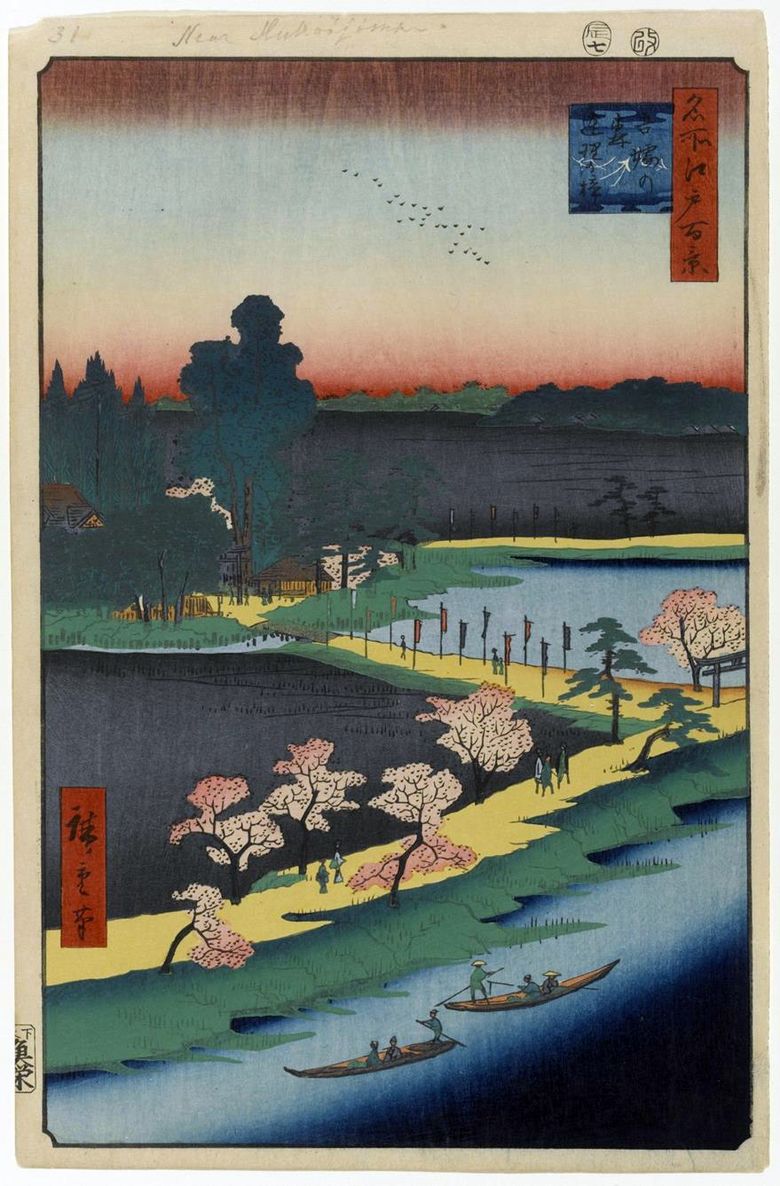 Camphriers fondus au sanctuaire d’Azuma no mori
Camphriers fondus au sanctuaire d’Azuma no mori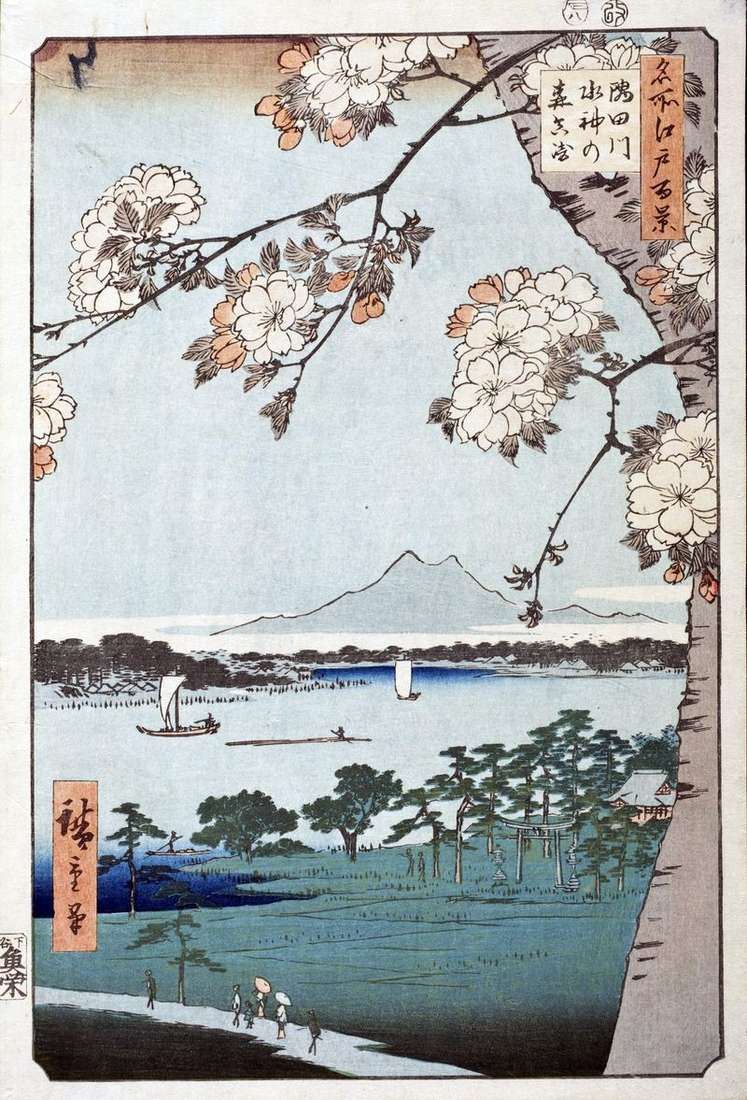 Sanctuary of Suidzin-no Mori and the locality of Massaki near the Sumidagawa River by Utagawa Hiroshige
Sanctuary of Suidzin-no Mori and the locality of Massaki near the Sumidagawa River by Utagawa Hiroshige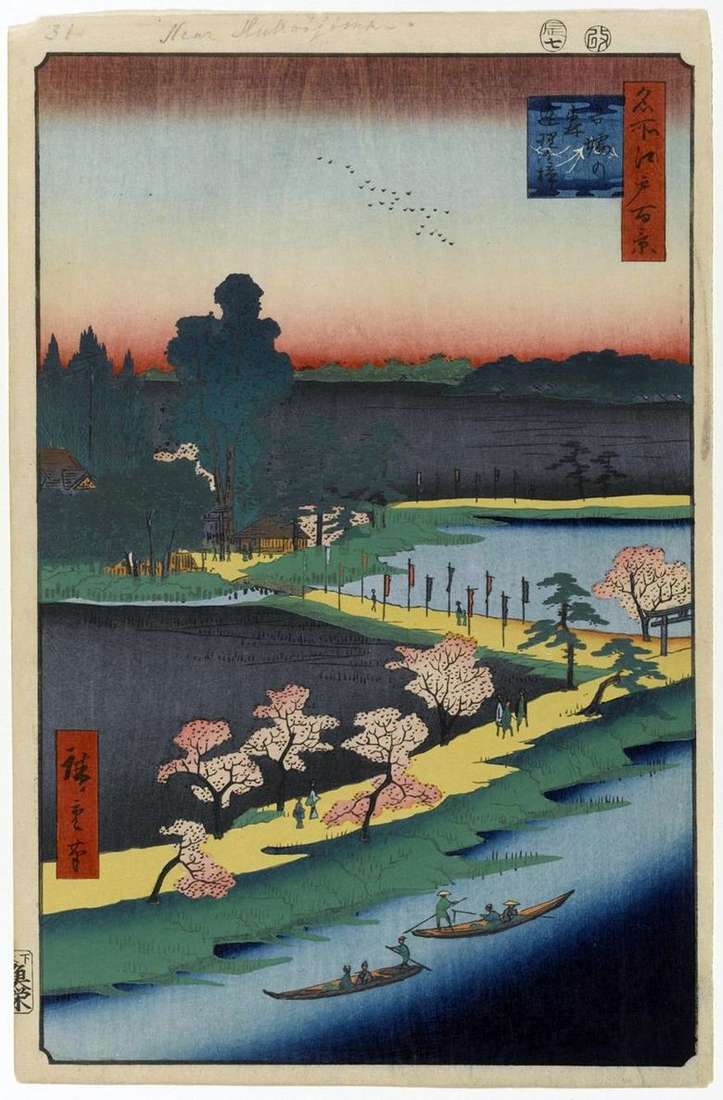 Los árboles de alcanfor fusionados en el Santuario Azuma-no Mori
Los árboles de alcanfor fusionados en el Santuario Azuma-no Mori Sanctuary Massaki on the Utigawa River, the village of Sekiya no sato and the sanctuary of Suilzin no Mori by Utagawa Hiroshige
Sanctuary Massaki on the Utigawa River, the village of Sekiya no sato and the sanctuary of Suilzin no Mori by Utagawa Hiroshige Sanctuary Motohatiman in Sunamura by Utagawa Hiroshige
Sanctuary Motohatiman in Sunamura by Utagawa Hiroshige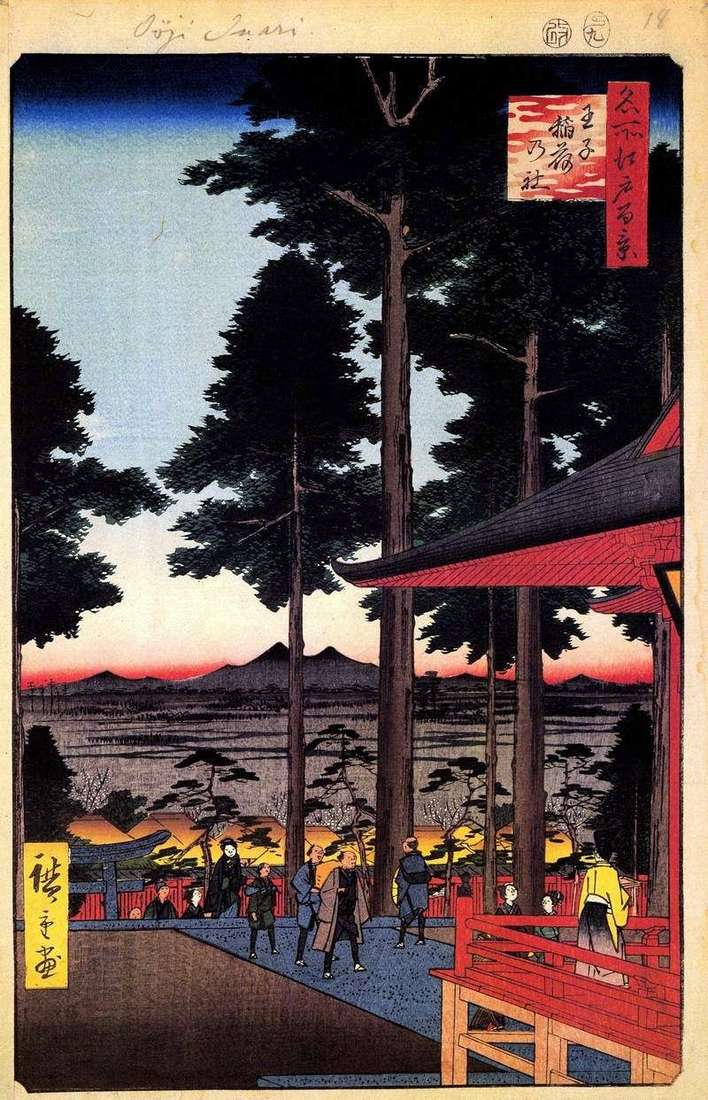 Inari Sanctuary in Ouji by Utagawa Hiroshige
Inari Sanctuary in Ouji by Utagawa Hiroshige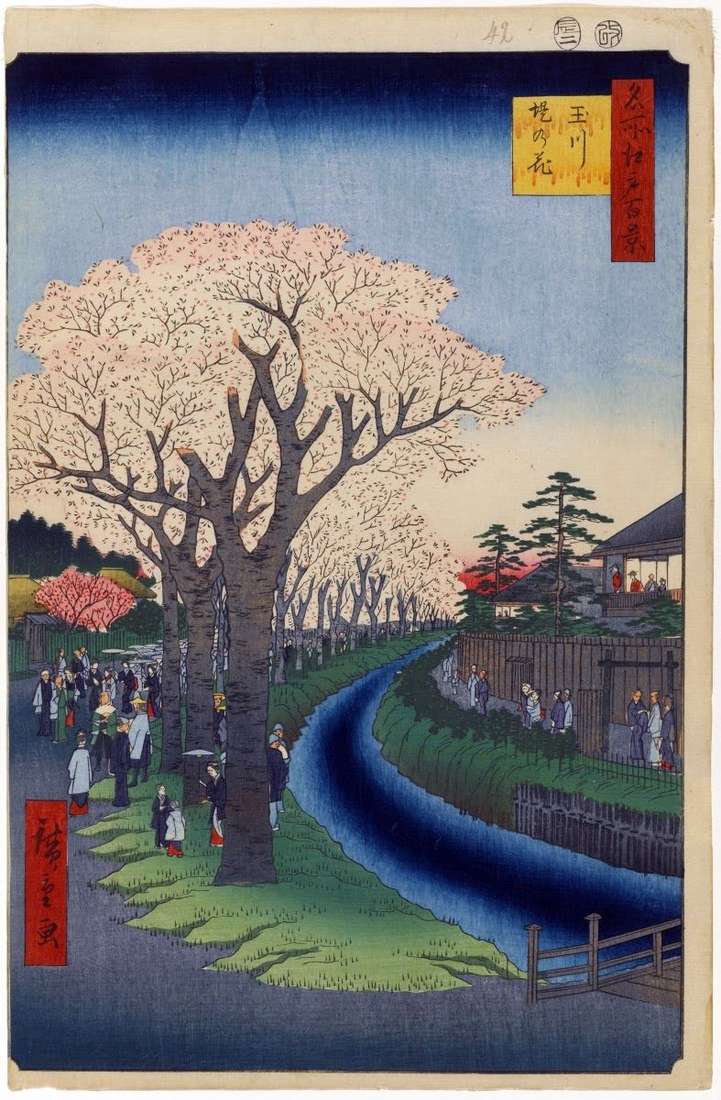 Sakura trees along the dam of the Tamagawa River by Utagawa Hiroshige
Sakura trees along the dam of the Tamagawa River by Utagawa Hiroshige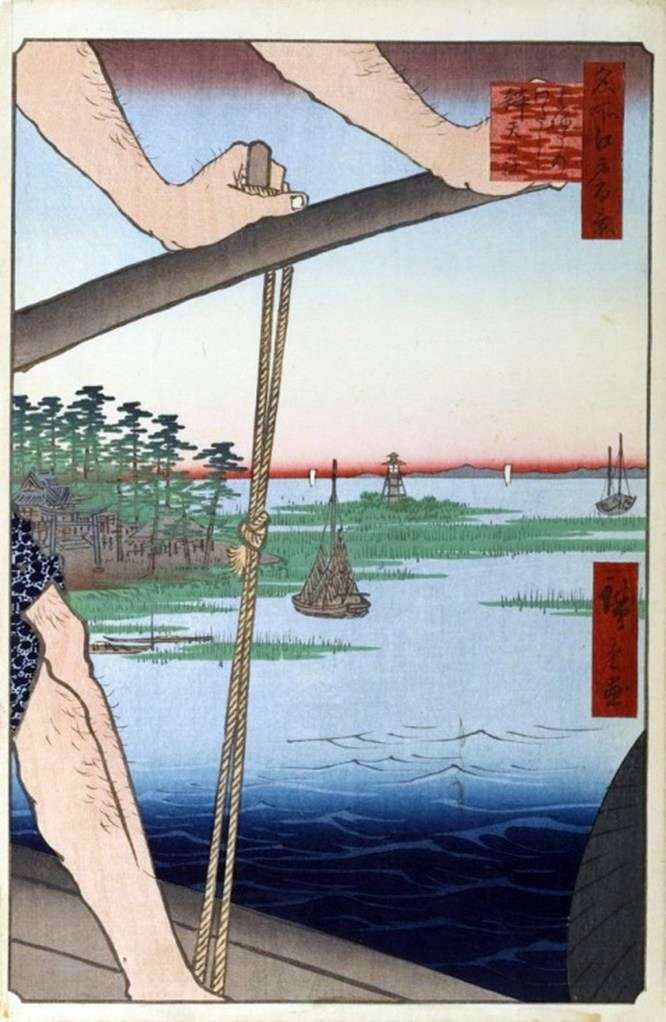 Crossing Haneda, the sanctuary of Benten by Utagawa Hiroshige
Crossing Haneda, the sanctuary of Benten by Utagawa Hiroshige